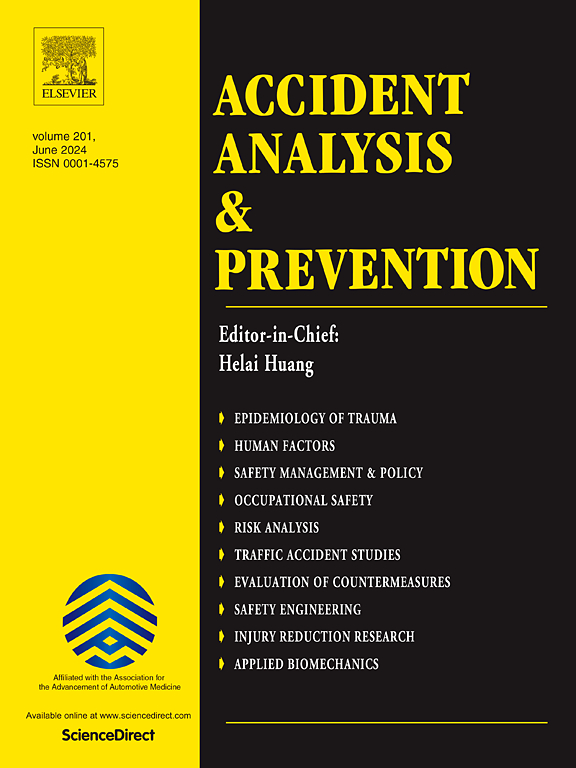Riding with distraction: Exploring the intention and behaviour of smartphone use while riding among motorcyclists in Vietnam
IF 5.7
1区 工程技术
Q1 ERGONOMICS
引用次数: 0
Abstract
The pervasive use of smartphones has significantly contributed to distracted driving, a leading cause of road traffic accidents globally. This study investigates the behavioural intentions and patterns of smartphone use while riding among motorcyclists in Vietnam, integrating the Theory of Planned Behaviour (TPB) with the Stimuli-Organism-Response (SOR) framework to encompass factors such as riding exposure and time pressure. A questionnaire survey was conducted, gathering data from 1,051 young motorcyclists. Using Partial Least Squares Structural Equation Modelling (PLS-SEM), the study identifies high levels of smartphone engagement during riding, driven primarily by Perceived Behavioural Control (PBC), which exhibited a stronger influence on behaviour than Attitudes and Social Norms. Notably, time pressure significantly enhanced the intention to use smartphones, suggesting that riding under time constraints could exacerbate the risk of distracted riding incidents. The findings highlight critical implications for road safety interventions and policy formulation, emphasising the need for targeted educational programmes and stricter enforcement measures to mitigate smartphone-induced distractions among motorcyclists at a higher risk of traffic accidents. The study contributes to understanding distracted riding behaviours in motorcycle-dominant regions, providing a foundation for future research and preventive strategies.
智能手机的普遍使用极大地助长了分心驾驶,成为全球道路交通事故的主要原因。本研究调查了越南摩托车手在骑行时使用智能手机的行为意向和模式,将计划行为理论(TPB)与刺激-组织-反应(SOR)框架相结合,涵盖了骑行暴露和时间压力等因素。我们进行了一项问卷调查,收集了 1,051 名年轻摩托车手的数据。通过使用偏最小二乘法结构方程建模(PLS-SEM),研究确定了骑行过程中智能手机的高参与度,其主要驱动因素是 "感知行为控制"(PBC),它对行为的影响强于 "态度 "和 "社会规范"。值得注意的是,时间压力大大增强了使用智能手机的意愿,这表明在时间紧迫的情况下骑行可能会加剧分心骑行事件的风险。研究结果凸显了对道路安全干预和政策制定的重要影响,强调需要有针对性的教育计划和更严格的执法措施,以减少交通事故风险较高的摩托车手因使用智能手机而分心的情况。这项研究有助于了解摩托车主导地区的分心骑行行为,为今后的研究和预防策略奠定基础。
本文章由计算机程序翻译,如有差异,请以英文原文为准。
求助全文
约1分钟内获得全文
求助全文
来源期刊

Accident; analysis and prevention
Multiple-
CiteScore
11.90
自引率
16.90%
发文量
264
审稿时长
48 days
期刊介绍:
Accident Analysis & Prevention provides wide coverage of the general areas relating to accidental injury and damage, including the pre-injury and immediate post-injury phases. Published papers deal with medical, legal, economic, educational, behavioral, theoretical or empirical aspects of transportation accidents, as well as with accidents at other sites. Selected topics within the scope of the Journal may include: studies of human, environmental and vehicular factors influencing the occurrence, type and severity of accidents and injury; the design, implementation and evaluation of countermeasures; biomechanics of impact and human tolerance limits to injury; modelling and statistical analysis of accident data; policy, planning and decision-making in safety.
 求助内容:
求助内容: 应助结果提醒方式:
应助结果提醒方式:


